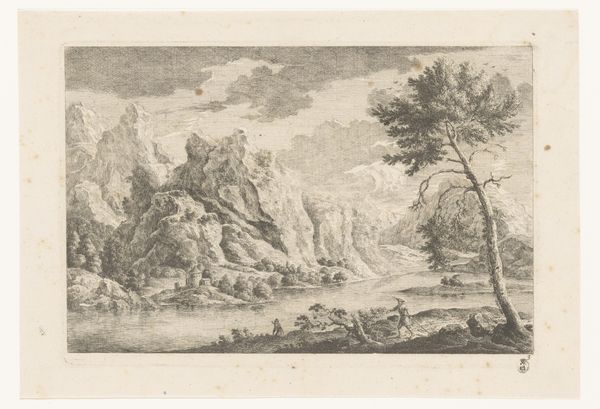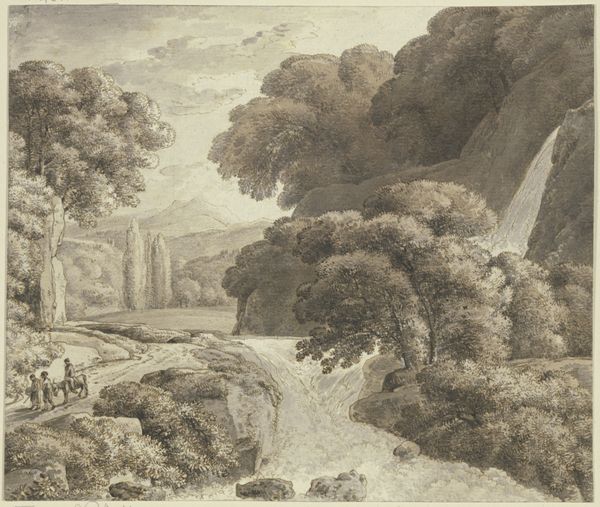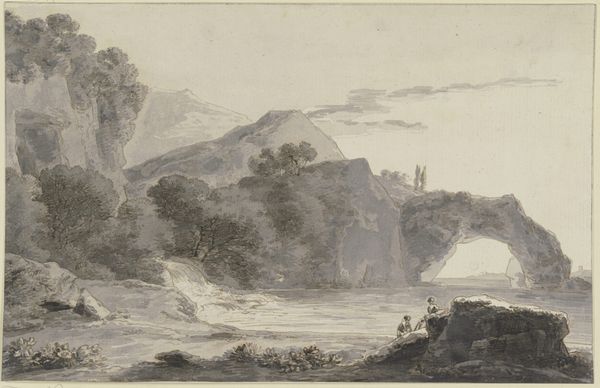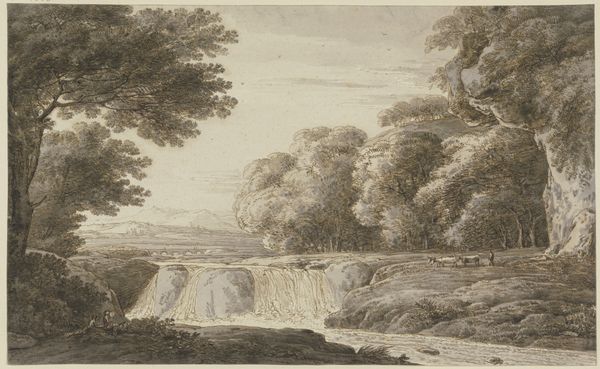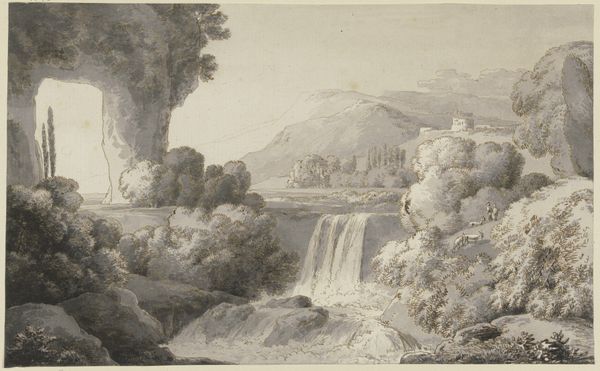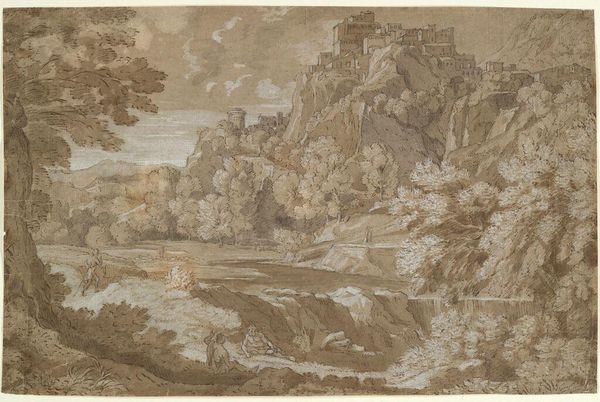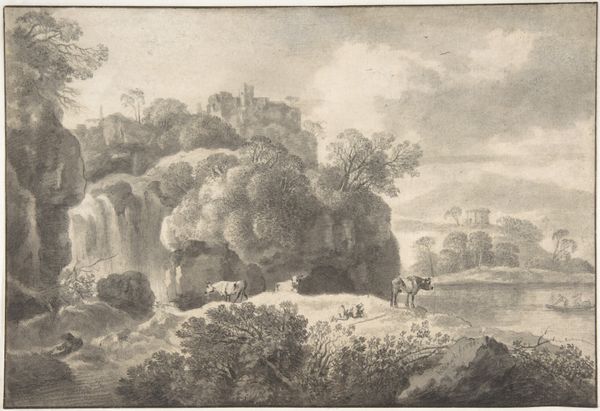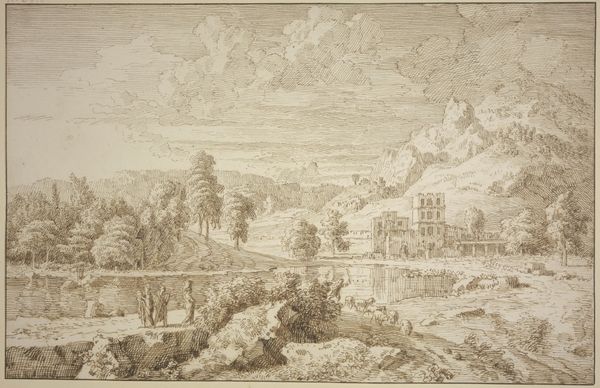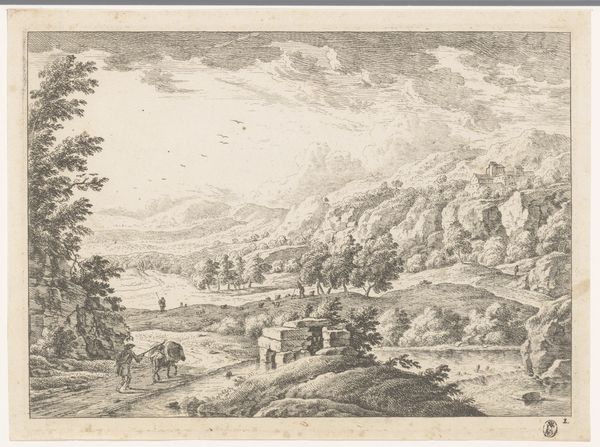
drawing, plein-air, watercolor, ink
#
drawing
#
plein-air
#
landscape
#
watercolor
#
ink
#
romanticism
#
academic-art
#
watercolor
Copyright: Public Domain
Curator: This drawing, held here at the Städel Museum, is titled "Mountainous Landscape with Castle Ruins and Two Waterfalls," attributed to Franz Kobell. The materials include ink and watercolor. What's your initial impression? Editor: My eye is immediately drawn to the contrasts in texture—the smooth, cascading falls against the rugged rock formations. I'm thinking about the pigments he would have had access to, the watermarks on the paper, all contributing to this effect of sublime roughness. Curator: It definitely evokes the sublime! Think about the Romantic movement, of which Kobell was a part. There was a fascination with untamed nature, ruins representing the decline of civilization. This landscape aesthetic served as an allegory to larger societal anxieties and philosophical shifts of the time. What about those tiny figures near the waterfall? Editor: Interesting detail. Their presence emphasizes the vastness of the landscape. But it also makes me wonder about leisure, class, who had access to this kind of experience of nature, the time for sketching _en plein air_, which this clearly is. Curator: Precisely! Think about access, and consider how Romanticism frequently presented an idealized view of nature that was only enjoyed or documented by a select segment of society. These were the people commissioning artworks like these. There is definitely a hierarchy present. Editor: And about the waterfalls: were these painted for their own sake? Were they chosen as an allegory to the Industrial Revolution and water-driven machines and labor? Curator: A good question. Certainly, nature, like any element of culture, is always viewed through the lens of social and economic factors. And the burgeoning technology in Germany at the time could not have escaped the consciousness. Also, water has often served as a visual signifier for purification or a return to the natural order. Editor: Absolutely. Reflecting on the process, on Kobell's deliberate combination of media, the precision of the ink balanced with the fluid washes of watercolor…it's more than just a scene, it’s a carefully crafted narrative. Curator: Right, the ink emphasizes certain details but the watercolor creates an overwhelming tone throughout the piece, both in tension and agreement. It’s definitely work looking at it under different theoretical lenses. Editor: Indeed. An insightful combination of material, setting, and socio-economic awareness reveals so much of the spirit of the age.
Comments
No comments
Be the first to comment and join the conversation on the ultimate creative platform.
